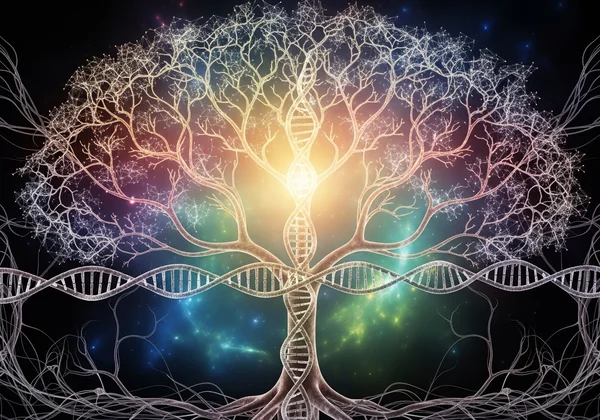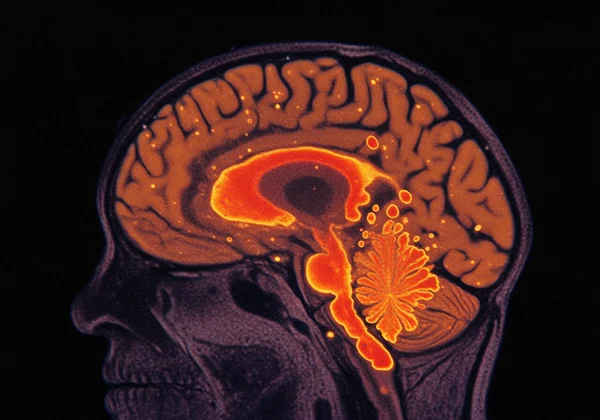Understanding BPD: Causes, Genetics, Development, and When to Take a BPD Test
Have you ever found yourself or a loved one struggling with intense, rollercoaster emotions and chaotic relationships, constantly asking, "Why?" Borderline Personality Disorder (BPD) can feel confusing and overwhelming, but understanding its origins is a powerful first step toward clarity, compassion, and healing. Many people wonder, Do I have BPD test? This question often marks the beginning of a journey. This guide will explore the complex interplay of factors behind the development of BPD, moving beyond blame and toward understanding. If you're seeking initial clarity, you can start your self-exploration with a preliminary screening.

Disclaimer: This article is for informational purposes only and does not constitute a medical diagnosis. The information provided here, and on our screening tool, is intended to be an educational starting point. Please consult a qualified mental health professional for a formal diagnosis and treatment plan.
BPD Genetics and Heritability
One of the most common questions is whether BPD is a condition passed down through families. The answer is complex, as genetics do play a role, but they are not the whole story. Research into the causes of BPD shows that while there isn't a single "BPD gene," there is a clear hereditary link. Think of genetics as laying a foundation for a sensitive temperament or vulnerability, but it's certainly not a predetermined future.
The Role of Family History in BPD
Studies have consistently shown that BPD is more common in individuals who have a close family member—such as a parent or sibling—with the disorder. This suggests a genetic predisposition. If you have a family history of BPD or other mental health conditions, you might have a higher sensitivity to environmental stressors. Understanding this connection is not about assigning blame but about recognizing a potential vulnerability. It helps frame the challenges not as personal failings, but as a combination of factors, some of which are inherited.

Is BPD Inherited? What Research Says
Research, including twin studies, suggests that genetic factors may account for about 40-60% of the risk for developing BPD. This means that while your genes can make you more susceptible, they don't determine your destiny. Specific inherited traits may include emotional intensity (a tendency to feel emotions very deeply and react strongly) and impulsivity. These traits themselves are not negative, but when combined with other factors, they can contribute to the development of BPD patterns. It's this interplay between our genes and our experiences that truly shapes how our mental health journey unfolds.
The Impact of BPD Trauma and Environment
Genetics might set the stage, but early experiences often dictate the play. A person’s early life and relationships are profoundly influential in the BPD development process. Adverse experiences can shape the brain and nervous system, particularly during formative childhood and adolescent years, creating a foundation for the struggles associated with BPD.
Childhood Trauma and BPD Development
A significant link exists between childhood trauma and BPD. Research indicates that a high percentage of individuals diagnosed with BPD report experiencing early life trauma, such as physical, emotional, or sexual abuse, as well as profound neglect. Chronic stress during childhood can disrupt the development of brain systems responsible for emotional regulation and impulse control. This creates a state of high alert that can persist into adulthood, making it difficult to feel safe in the world and in relationships. For those questioning their symptoms, a free BPD test can offer a confidential first step.
The Invalidating Environment Theory in BPD
Beyond overt trauma, a concept central to understanding BPD is the "invalidating environment." This theory, developed by Dr. Marsha Linehan, describes a setting where a child's private experiences, especially their emotions, are consistently dismissed, punished, or treated as invalid. For a child with high emotional sensitivity, being told "you're overreacting" or "stop being so dramatic" can be incredibly damaging. This persistent invalidation teaches the child that their internal compass is wrong and that they cannot trust their own feelings, leading to confusion about their identity and intense difficulty regulating their emotions.

Attachment Styles and Early Relationships
Early relationships with caregivers form our "attachment style"—our blueprint for how we connect with others throughout life. Disrupted, inconsistent, or fearful attachments in childhood can lead to an insecure attachment style in adulthood. For many with BPD traits, this manifests as a deep-seated fear of abandonment. They may desperately crave intimacy but simultaneously push it away, fearing the inevitable pain of rejection. This internal conflict is a core source of the relationship instability seen in BPD.
Neurobiological Factors in BPD
The inner world of someone with BPD is also shaped by biological factors within the brain. Neurobiology explores how brain structure and chemical messengers influence our thoughts, feelings, and behaviors. In BPD, key differences in these areas can help explain the hallmark symptoms of the disorder.
Brain Differences and BPD Symptoms
Brain imaging studies have identified structural and functional differences in individuals with BPD. Three key areas are often implicated:
-
The Amygdala: This is the brain's "alarm system," responsible for processing fear and other strong emotions. In people with BPD, the amygdala is often hyperactive, leading to intense and rapid emotional responses.
-
The Prefrontal Cortex: This area acts as the brain's "control center," responsible for reasoning, planning, and impulse control. In BPD, this region may be underactive, making it harder to calm down the over-activated amygdala and regulate impulsive behaviors.
-
The Hippocampus: Involved in memory and learning, this area can also be affected, potentially impacting self-image and contributing to a fragmented sense of identity.

Neurotransmitters and Emotional Dysregulation
Neurotransmitters are the chemical messengers that allow brain cells to communicate. Imbalances in certain neurotransmitters, such as serotonin (which helps regulate mood) and dopamine (related to reward and impulsivity), are thought to play a role in BPD. This chemical imbalance can contribute to the severe emotional dysregulation, mood swings, and impulsive actions that are so central to the BPD experience. This is why medications are sometimes used as part of a comprehensive treatment plan to help stabilize brain chemistry.
The Biosocial Model: Integrating All Factors
So, is BPD caused by genetics, trauma, or brain chemistry? The most accepted explanation is that it’s all of them, working together. The Biosocial Model provides a compassionate and comprehensive framework for understanding how these elements interact.
How Predisposition Meets Life Experiences
The Biosocial Model proposes that BPD develops from the transaction between a biological predisposition for high emotional sensitivity and an invalidating environment. Imagine a child born with a very sensitive emotional system (the biological part). When this child grows up in an environment that doesn't understand, validate, or teach them how to manage these intense emotions (the social part), a destructive cycle begins. The child’s intense emotions are invalidated, leading to even more emotional dysregulation, which in turn elicits more invalidation from the environment. Over time, this transaction shapes the patterns of thinking, feeling, and behaving that characterize BPD.
Moving Forward: Understanding Your Unique Story
Understanding the causes of BPD—genetics, trauma, and neurobiology—is not about finding something or someone to blame. It is about building a foundation of self-compassion and recognizing that these intense struggles are not a character flaw. They are the result of a complex interplay between a sensitive nature and painful life experiences. This knowledge is power. It validates your pain and illuminates the path toward healing.
Recovery is not only possible but common with the right support and tools. If this article resonates with you, taking the next step can be simple and private. To better understand your own patterns, consider taking a reliable BPD test. It’s a free, confidential tool designed to be your first step toward understanding and a richer life.
Frequently Asked Questions About BPD Causes & Screening
How can I understand if I have BPD symptoms?
The first step is self-reflection and education. Reading about the official criteria and personal experiences can provide clarity. For a structured look at your own patterns, an online preliminary screening can be a helpful tool. It offers a quick, confidential way to assess whether your experiences align with common BPD symptoms, guiding you on whether to seek professional consultation.
What are the common symptoms of Borderline Personality Disorder?
The DSM-5 lists nine core symptoms: frantic efforts to avoid abandonment, unstable and intense relationships, unstable self-image, impulsivity in at least two damaging areas (e.g., spending, sex, substance use), recurrent suicidal behavior or self-harm, emotional instability, chronic feelings of emptiness, inappropriate intense anger, and transient stress-related paranoia or dissociation.
Can BPD be successfully treated or "cured"?
Yes, BPD is absolutely treatable, and many people achieve remission and live fulfilling lives. While "cured" might not be the right word, specialized therapies like Dialectical Behavior Therapy (DBT) are highly effective at teaching skills for emotional regulation, distress tolerance, and interpersonal effectiveness. Recovery is a realistic and hopeful goal.
How do I get formally tested for BPD?
A formal diagnosis can only be made by a qualified mental health professional, such as a psychiatrist, psychologist, or licensed therapist. The process involves a comprehensive clinical interview where they will discuss your symptoms, personal history, and experiences in depth. An online BPD test like ours can be a great starting point to bring to this conversation, but it can never replace a professional evaluation.